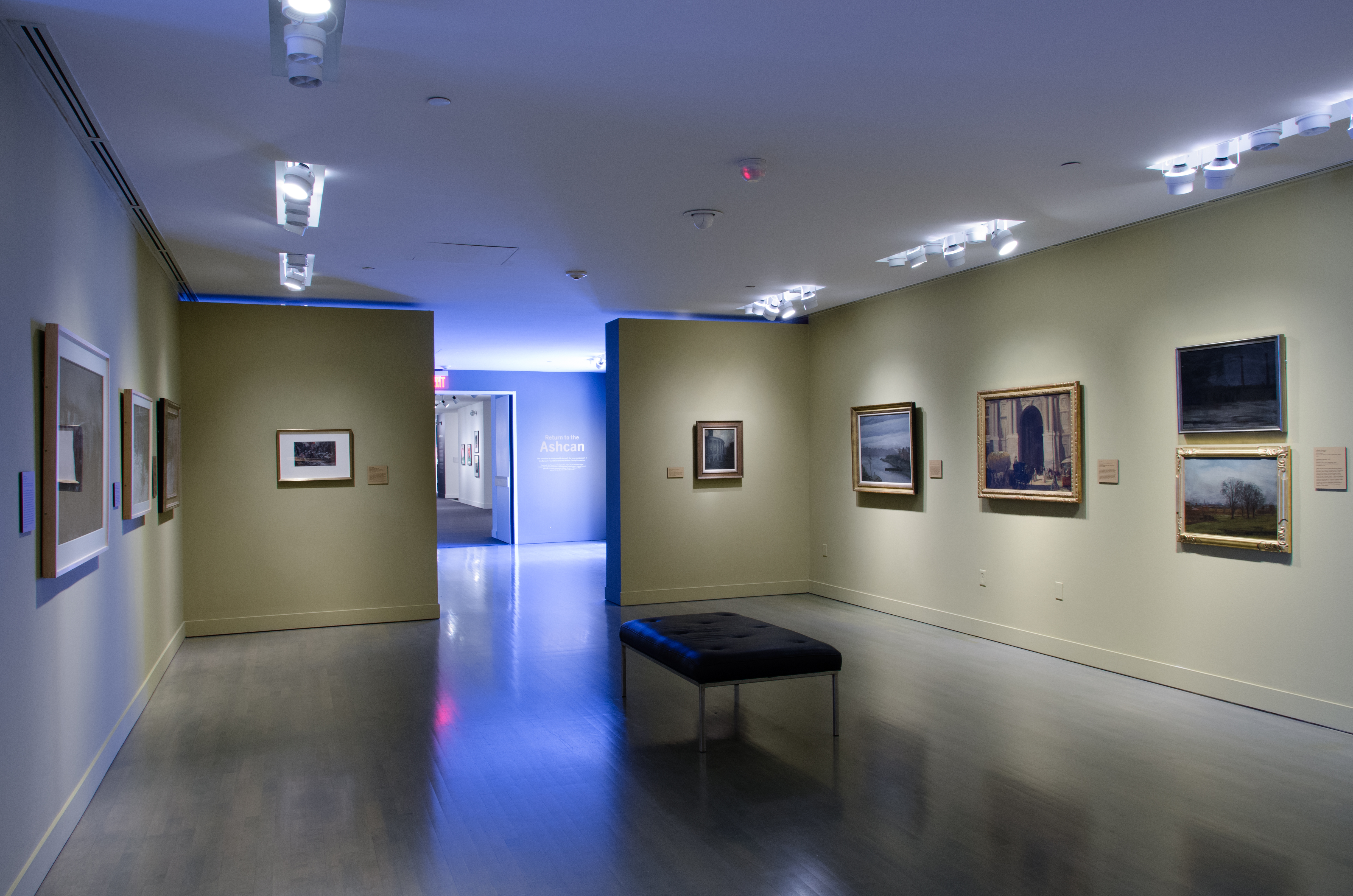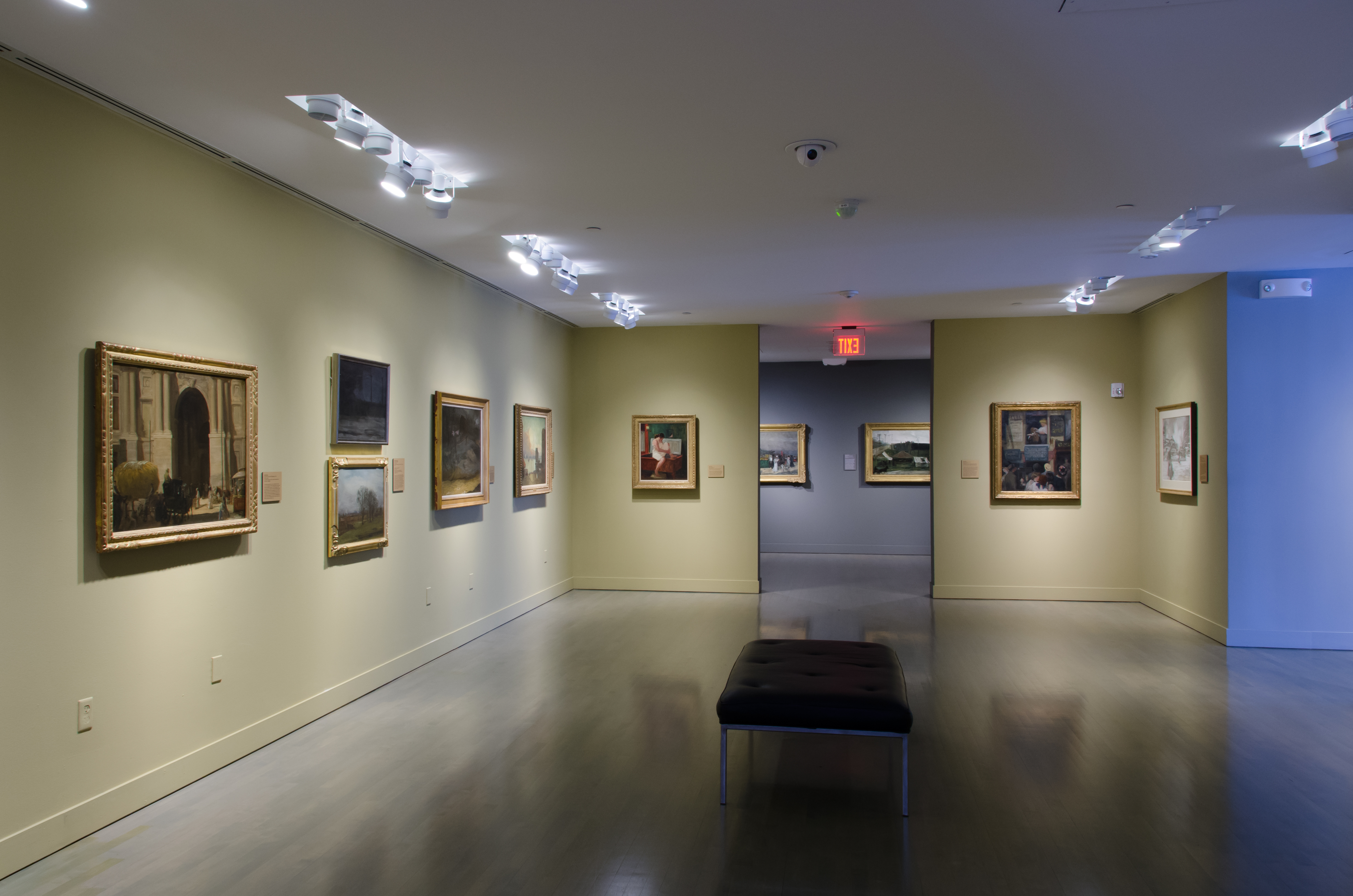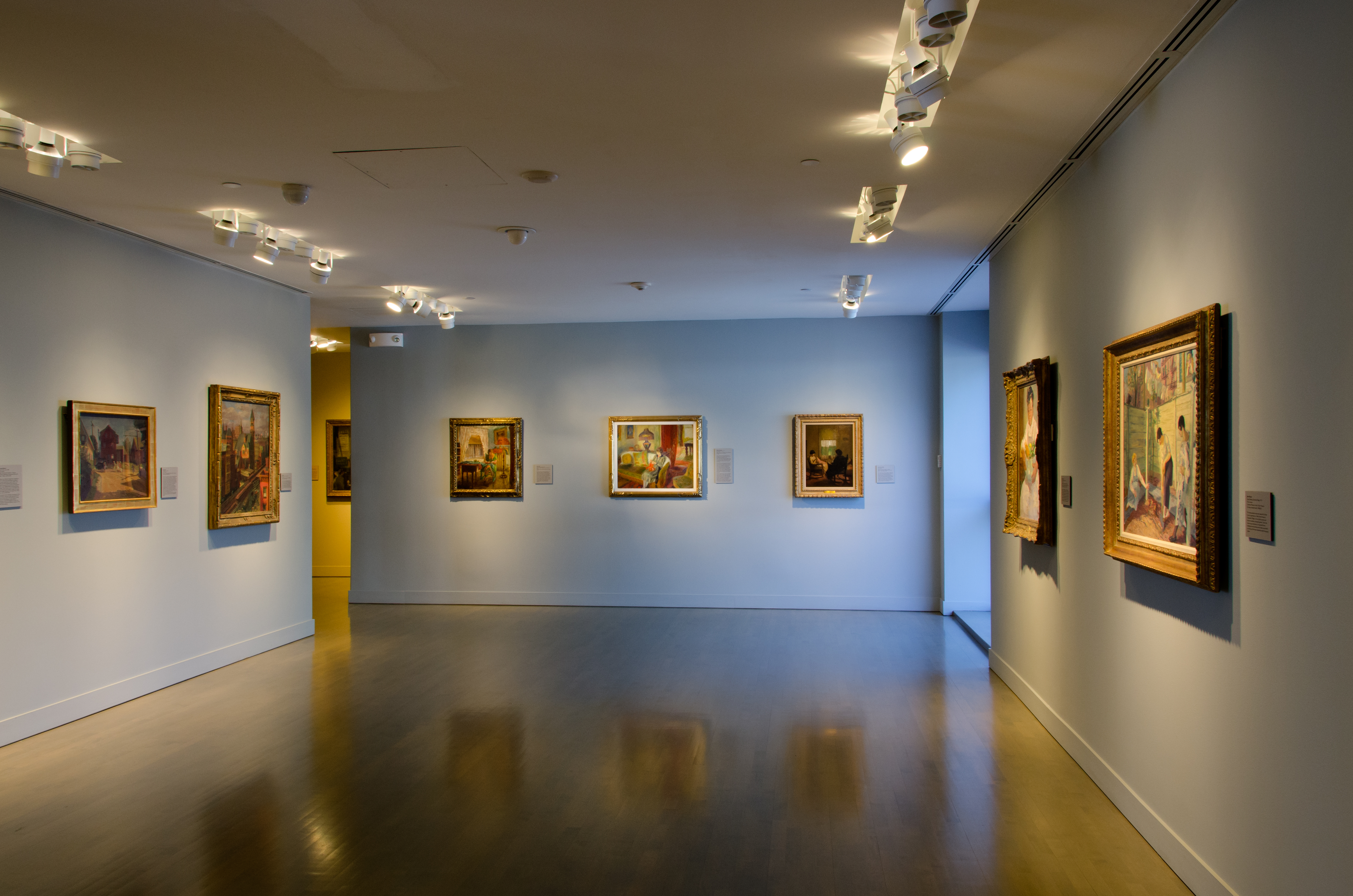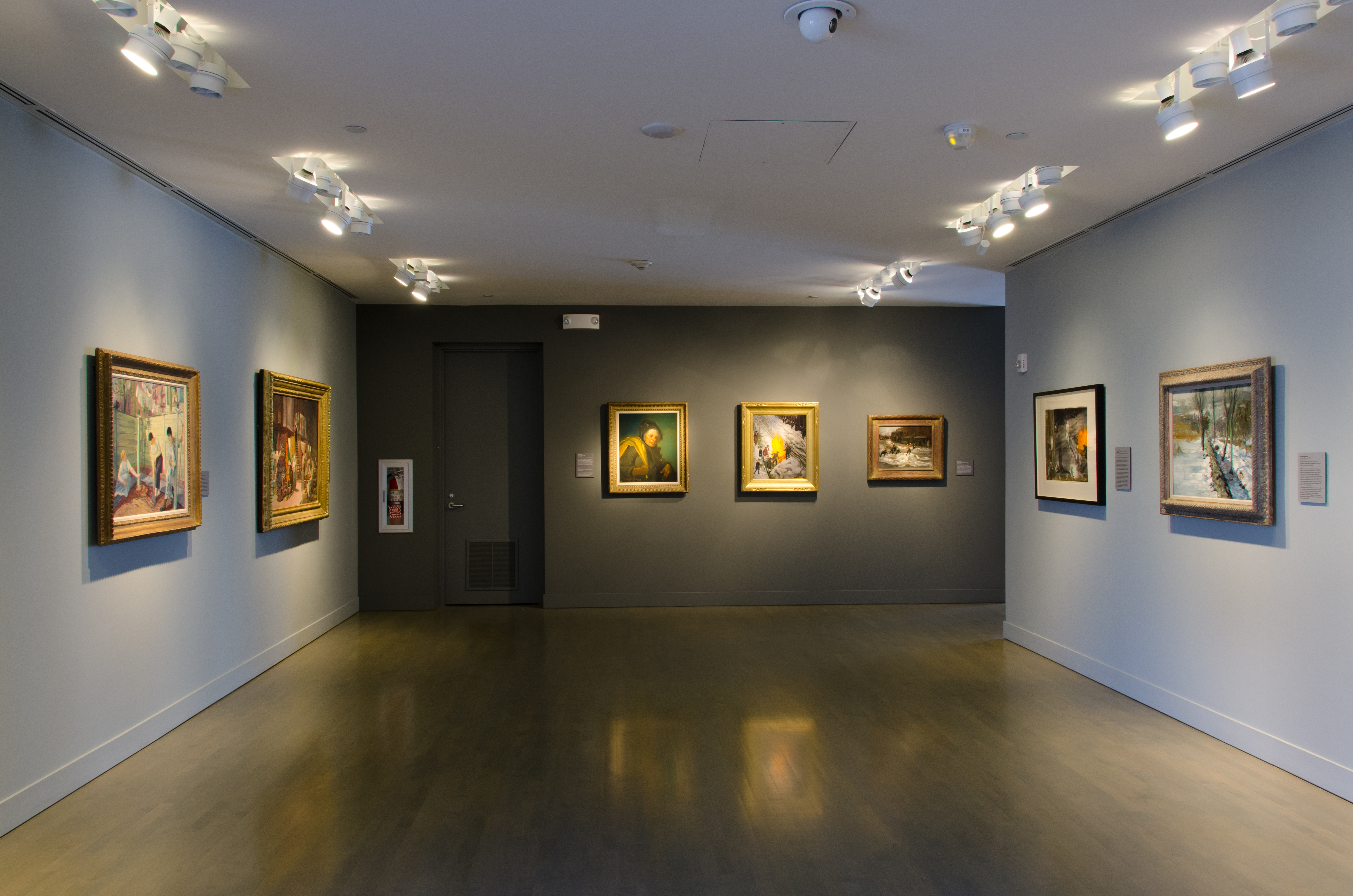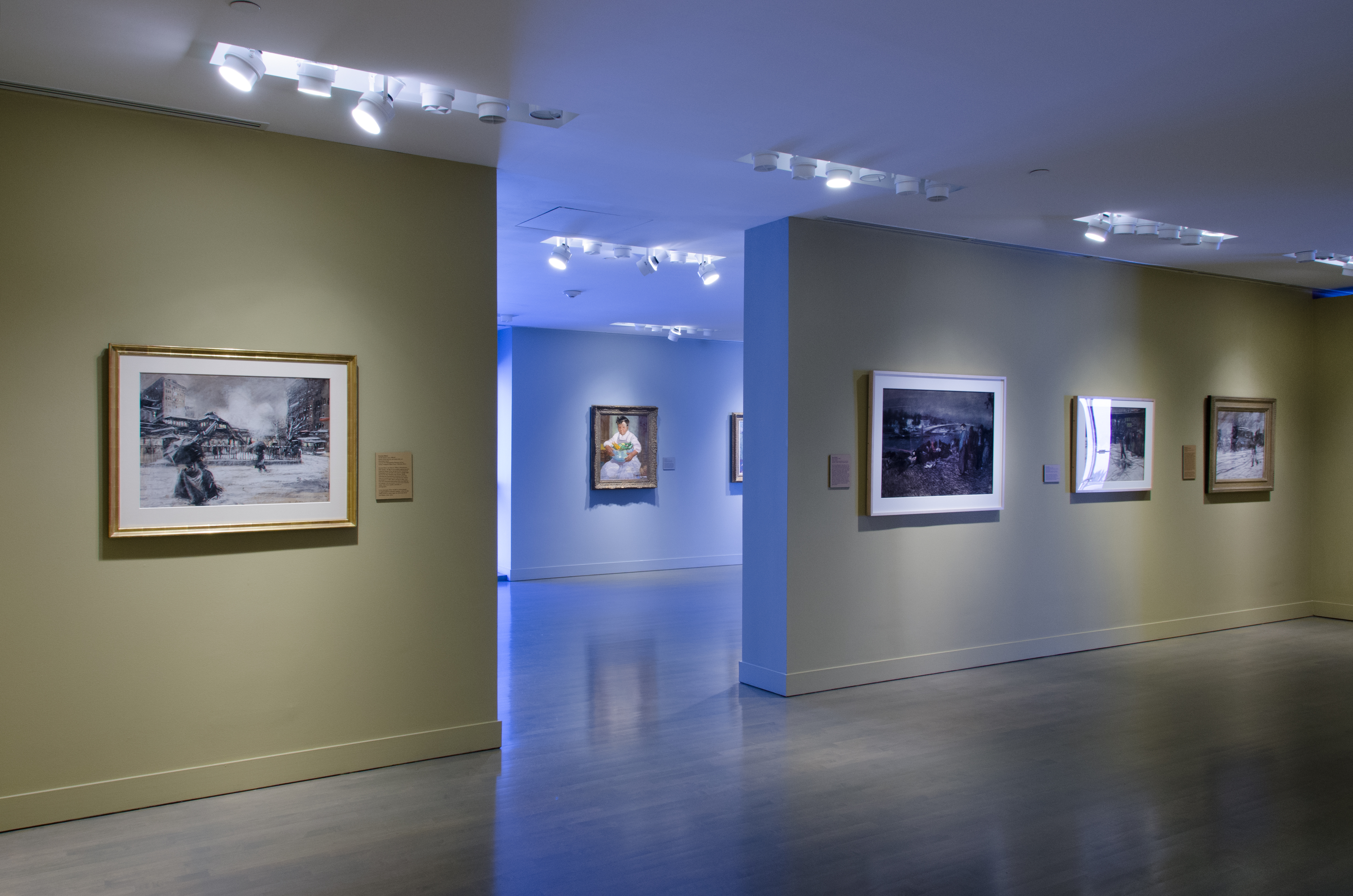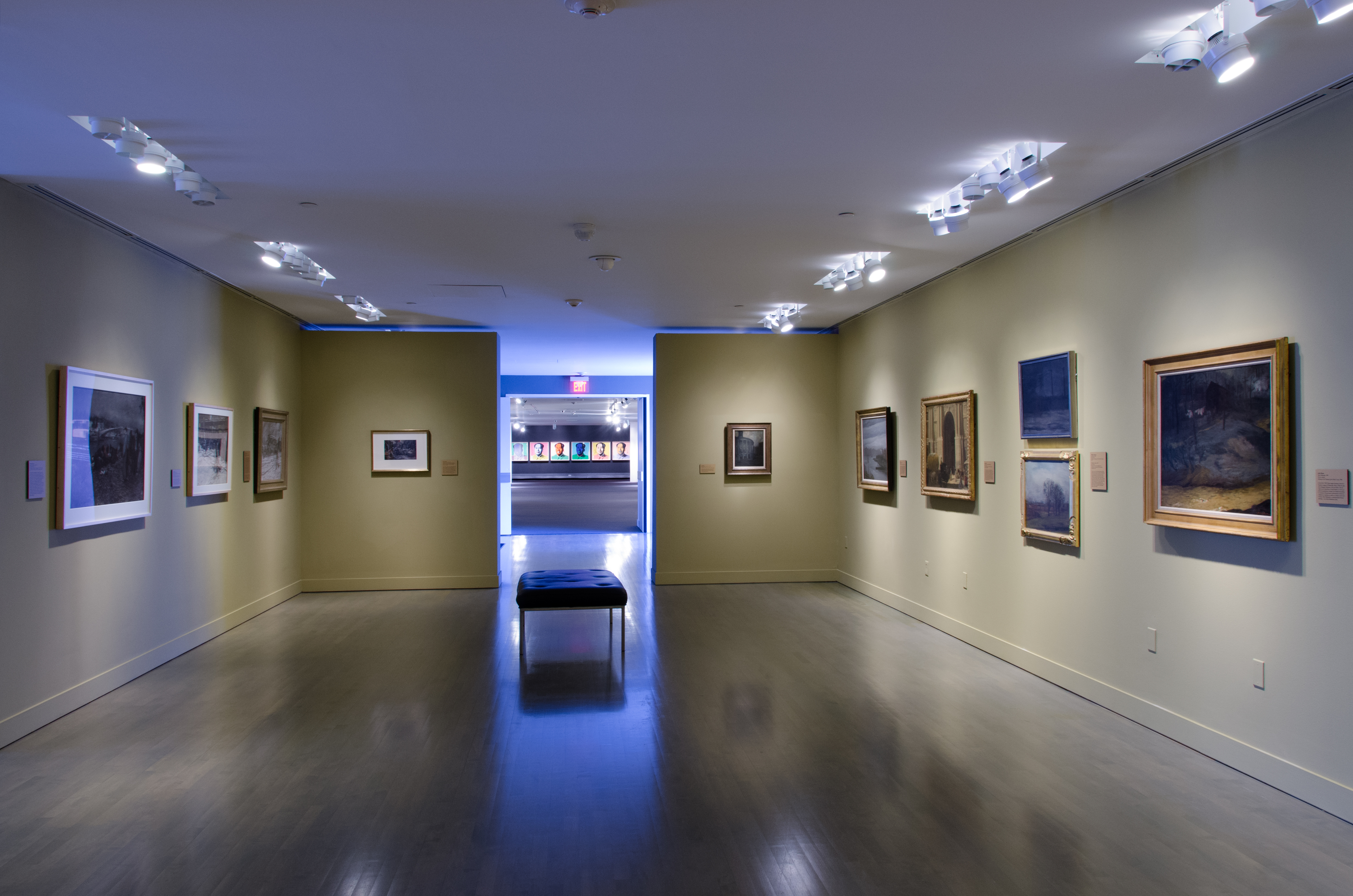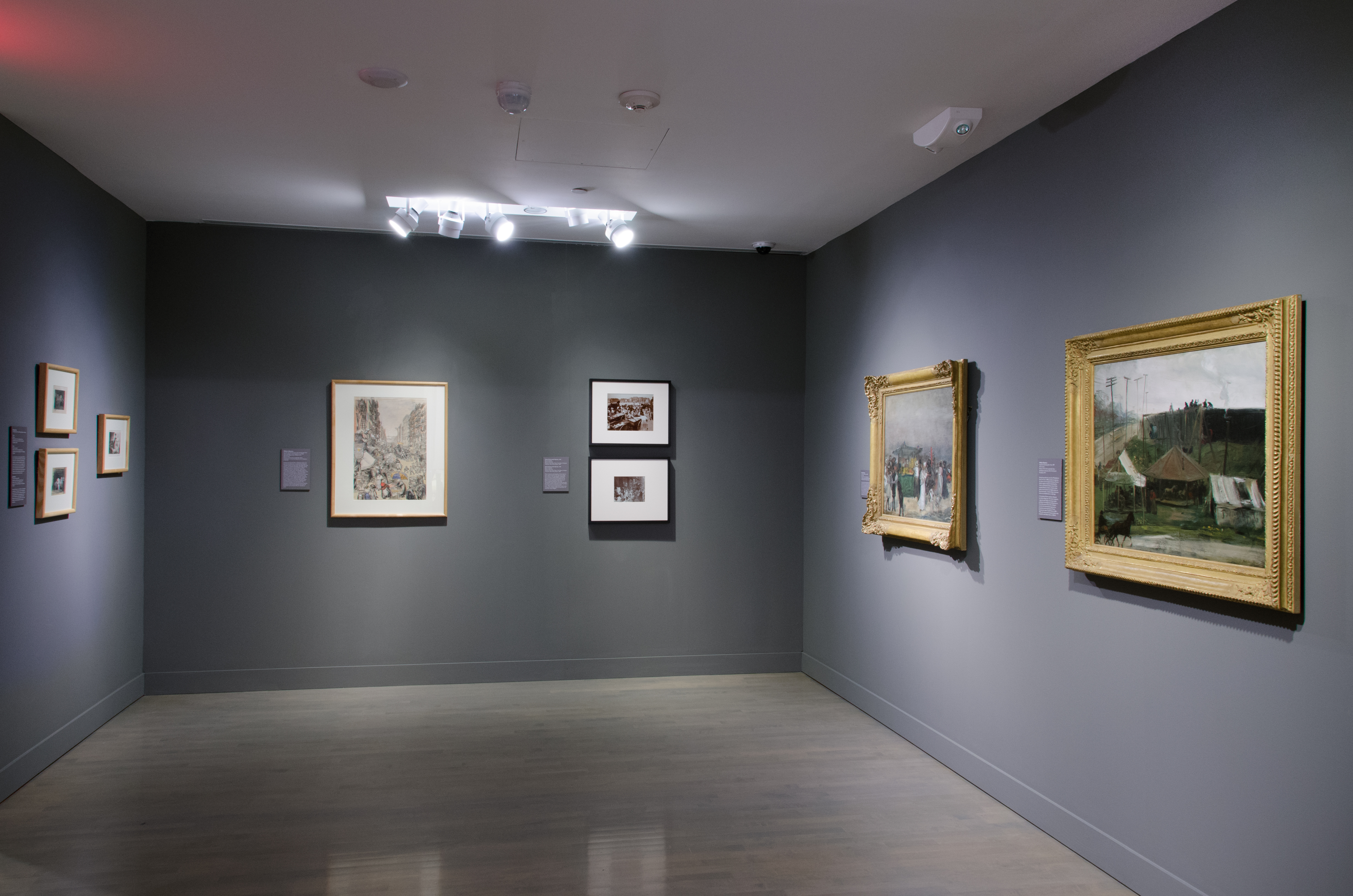Return to the Ashcan
October 20, 2012 to February 24, 2013
Jorge Santis
Beginning in 1891, Cincinnati-born Robert Henri, or Robert Henry Cozad (1865-1929), was America’s most influential visual artist, a title that would span more than two decades. He was a triple threat: accomplished painter, mesmerizing teacher, and publicity genius. His formal teaching career began at the School of Design for Women (1892-1895) in Philadelphia and the Pennsylvania Academy of the Fine Arts in Philadelphia. He would later teach at the New York School of Art (1902-08) in Manhattan, the Henri School of Art (1909-12) and finally at the Art Students League of New York (1915-27). Informally, he also taught as a member of the Charcoal Club in Philadelphia (1893). From the beginning, he became a lightening rod, inspiring and urging his students to capture the reality of the streets as it was, without any editing or subterfuge. His philosophy sprang from multiple, international sources, which included the writings of Russian novelist Leon Tolstoy (1828–1910) and American poet and philosopher Ralph Waldo Emerson (1803-82), as well as the powerful canvases of European masters Diego Velázquez (1599-1600), Frans Hals (1580–1656), and Edouard Manet (1832-83), among others. Henri’s initial coterie started with a group of young, Philadelphia-based artist-reporters, who under his spell progressed from gifted illustrators into first rate painters. They were George Luks (1866-1933), William Glackens (1870-1938), Everett Shinn (1876- 1953), and John Sloan (1871-1951). They adopted a style of somber genre scenes, dark portraits, and desolate landscapes devoid of any trace of idealization. Their forthright approach gained these artists the nicknames of “Philadelphia Realists,” “Devotees of the Ugly,” and “The Black Gang.” By 1904 all of Henri’s disciples had moved to New York City, and with renewed vigor, undertook the recording of the daily lives of recent Italian and Jewish immigrants, while trying to adapt to the demands of their new environment. Soon after, a second wave of artists including: Jerome Myers (1867-1940), George Bellows (1882-1925), Reginald Marsh (1898-1954), Rockwell Kent (1882-1971), Guy Pène du Bois (1884-1958), and Edward Hopper (1882-1967) adopted Henri’s creed, if ever briefly. As their raw realism gains apogee, a new derogatory term is assigned to them: Ashcan School. This epithet referred to the painters’ willingness to render an uncensored reality, sprinkled with unsavory asides. In 1913, the Armory Show opened in New York City; its impact permanently affected Henri and his followers directly. The European entries, which included samples of Cubism, Post-Impressionism, abstraction, Futurism and other avant-garde movements, made Ashcan work appear passé and lifeless by comparison. Sadly, from then on, realism lost its spark, and its artistic discourse became progressively bland and irrelevant. During the last 30 years, immigration has returned as a hot topic in America’s sociopolitical horizon. Regretfully, Henri and his followers are no longer here to record their tumultuous struggles and hardships so eloquently. Instead, it has now befallen to cable television, daily newspapers, and weekly magazines to capture for posterity America’s next chapter. The exhibition Return to the Ashcan aspires to illustrate some of the most prominent facets of this bygone art movement. Present are dismal ghetto scenes where men, women, and children enjoy simple pleasures, fight inclement weather, and pose for informal, sometimes intimate portraits. Many of the 40 works on view here come from prestigious public and private collections all over the north and southeast of the nation. Our presentation is this time further enhanced by a full-color catalog, with an informative essay by scholar Carol Troyen. Both, the exhibition and publication were generously sponsored by the Sansom Foundation and the Hudson Family more

